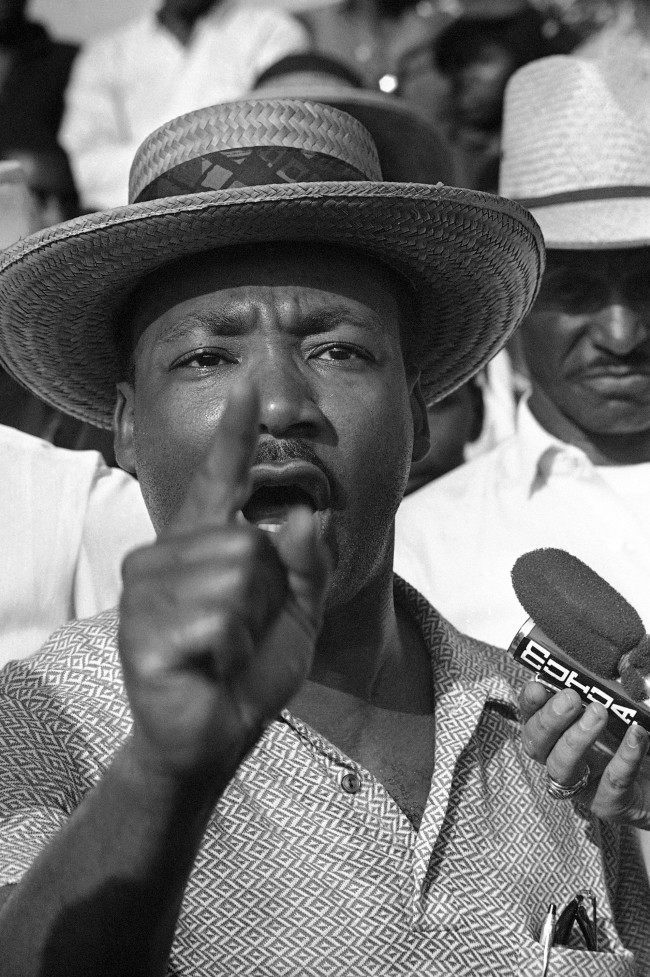
We want all our rights and we want them now, says Dr. Martin Luther King as he addresses some 200 marchers that accompanied him and other Civil Rights leaders on a trek along U.S. 51 in Northwest Mississippi in Senatobia, Wednesday, June 9, 1966. The march is being made along a route chosen by James Meredith for a Memphis-to-Jackson walk before he was wounded from ambush on Monday.
ON March 10 1969, Martin Luther King’s murderer James Earl Ray was jailed for 99 years by a court in Memphis, Tennessee.
His guilty plea was made on the understanding he was spared the electric chair.
In the aftermath of the murder, trouble flared.
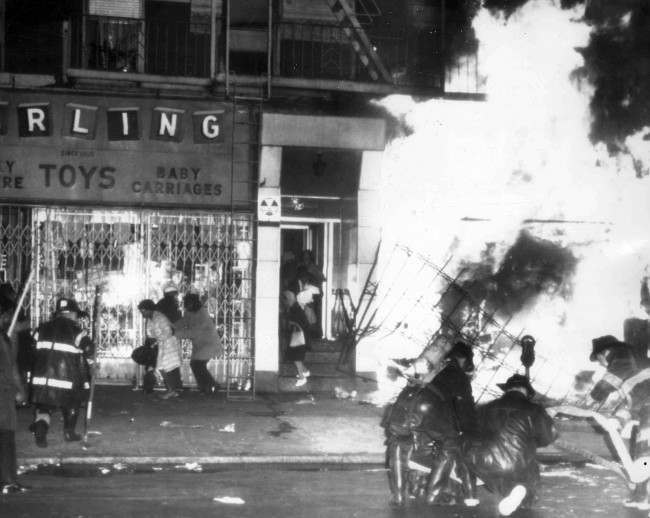
Firemen battle a blaze on 125th Street in Harlem, New York, on April 4, 1968, after a furniture store and other buildings were set on fire after it was learned that civil rights leader Dr. Martin Luther King had been assassinated in Memphis.
But, then, violence was never far away. The country’s oppressed were fighting the State.
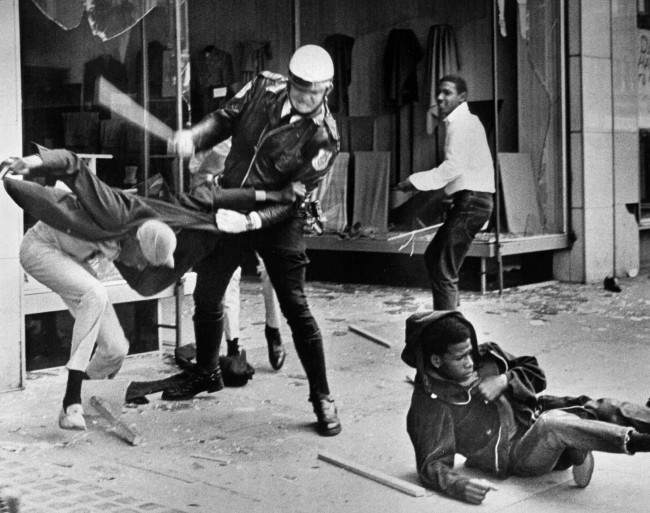
A police officer uses his nightstick on a youth reportedly involved in the looting that followed the breakup of a march led by Dr. Martin Luther King Jr. March 28, 1968, in Memphis, Tenn. Black leaders accused the police of brutality while police officers said they did what was necessary to restore order. In the wake of the violence, a curfew was imposed and more than 3,800 National Guardsmen were rushed to the city. A week later, King was assassinated at Memphis’ Lorraine Motel.
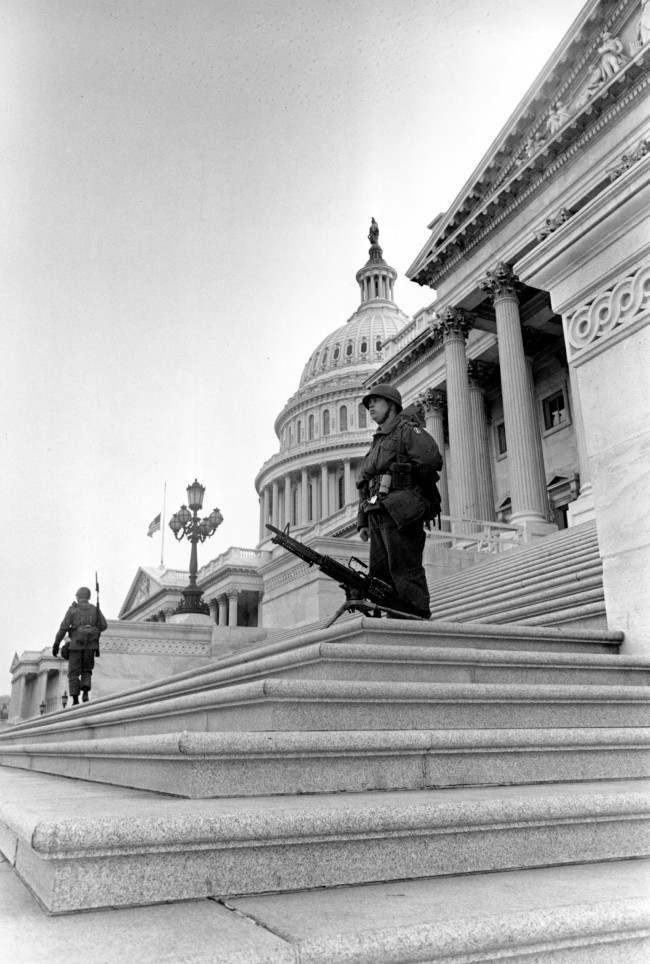
Troops, one with a machine gun, stand guard on the steps of the U.S. Senate wing of the Capitol Building in Washington, D.C., April 5, 1968. Federal troops were called into the nation’s capital by order of President Lyndon Johnson during a day of arson and looting following the assassination of Dr. Martin Luther King, Jr. in Memphis, Tenn., April 4. The flag is at half staff in tribute to the civil rights leader.
Ray was known villain. He’d escaped from Missouri State Penitentiary in April 1967 where he was serving a 20 year sentence for armed robbery.
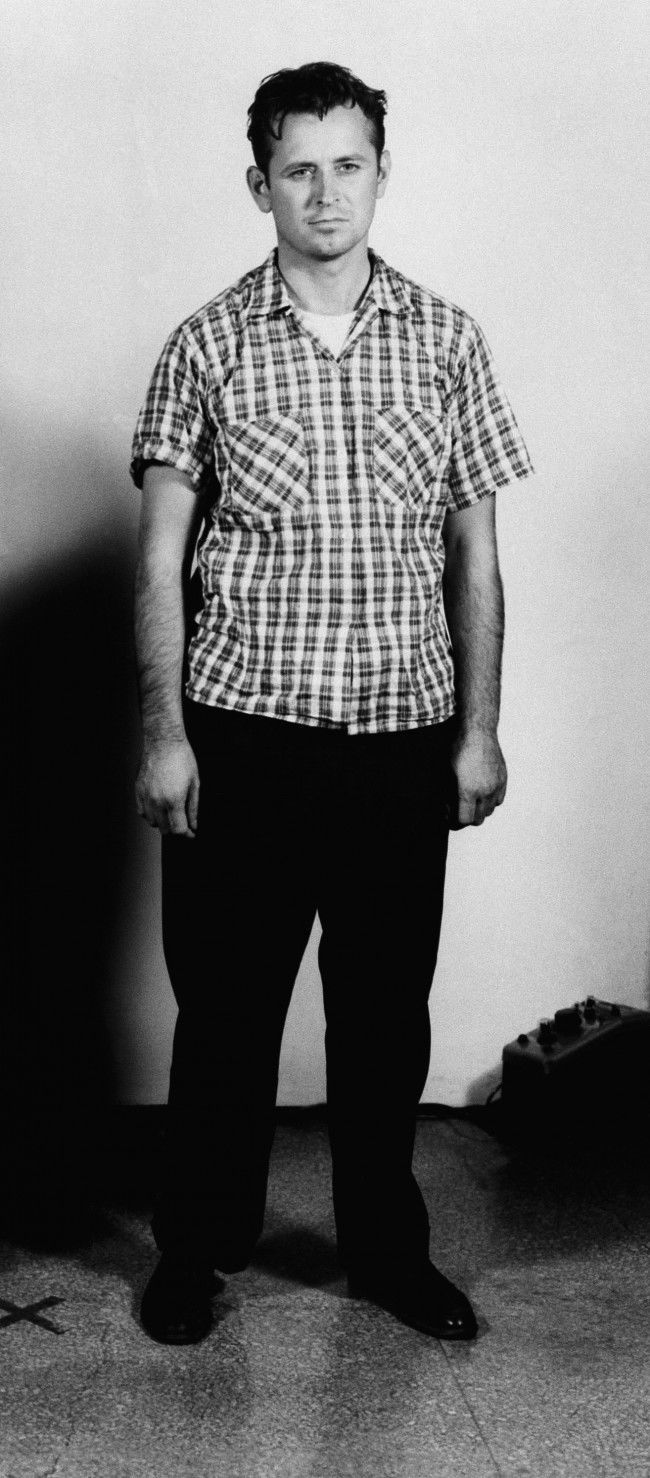
This photograph of James Earl Ray was made at the time he was sentenced to 20 years in prison for armed robbery in St. Louis, Mo., April 19, 1959. He was reported missing from the Missouri penitentiary April 23, 1967. The FBI said today it has identified Eric Starvo Galt, the man wanted in the Killing of Dr. Martin Luther King, Jr.,as James Earl Ray, an escapee from the Missouri penitentiary.
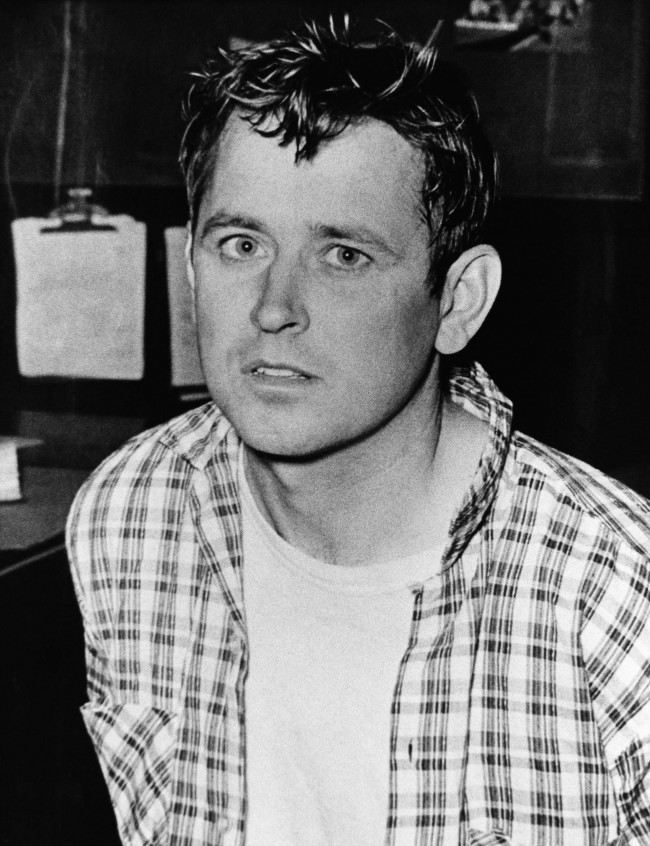
Ray shot King in Memphis in April 1968 as he stood on a hotel balcony. He was in the city to lead a civil rights march.
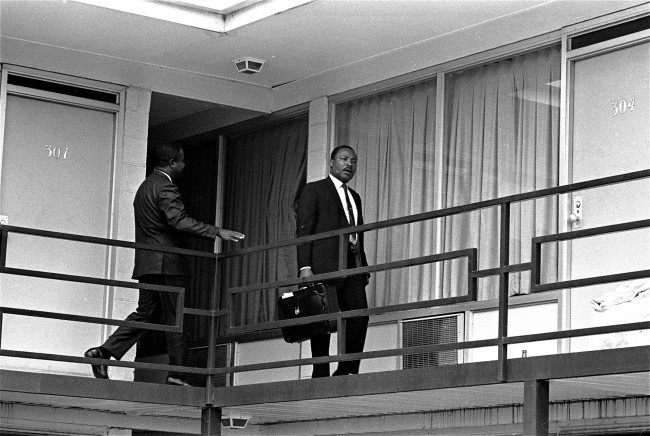
This April 3, 1968 file photo shows Rev. Martin Luther King, Jr. walking across the balcony of the Lorraine Motel in Memphis. The civil rights leader was standing on the balcony of the Lorraine Motel when he was killed by a rifle bullet on April 4, 1968.

– Memphis detectives climb on a rail outside the room of Dr. Martin Luther King at the Lorraine Motel, Memphis, on April 4, 1968, searching for clues.
The FBI had a name.
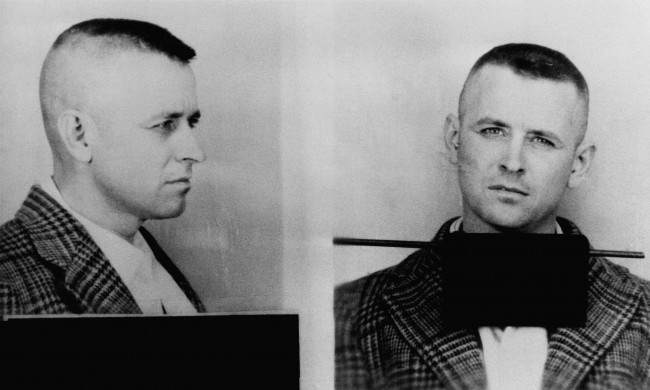
The FBI said these are 1960 pictures of Ray.
Ray had rented this room in Memphis.
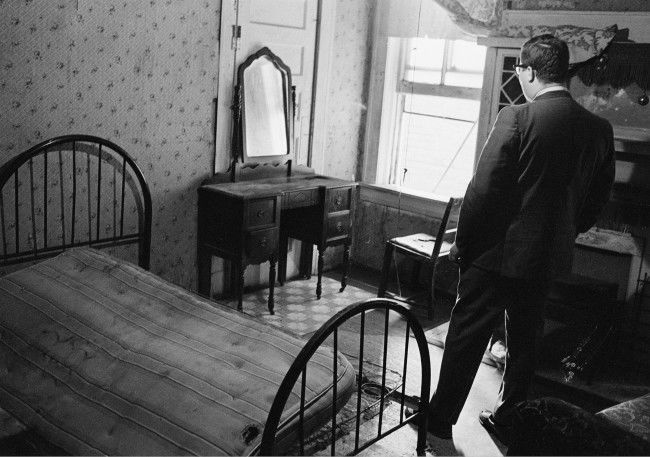
The bathtub sold for a mint.
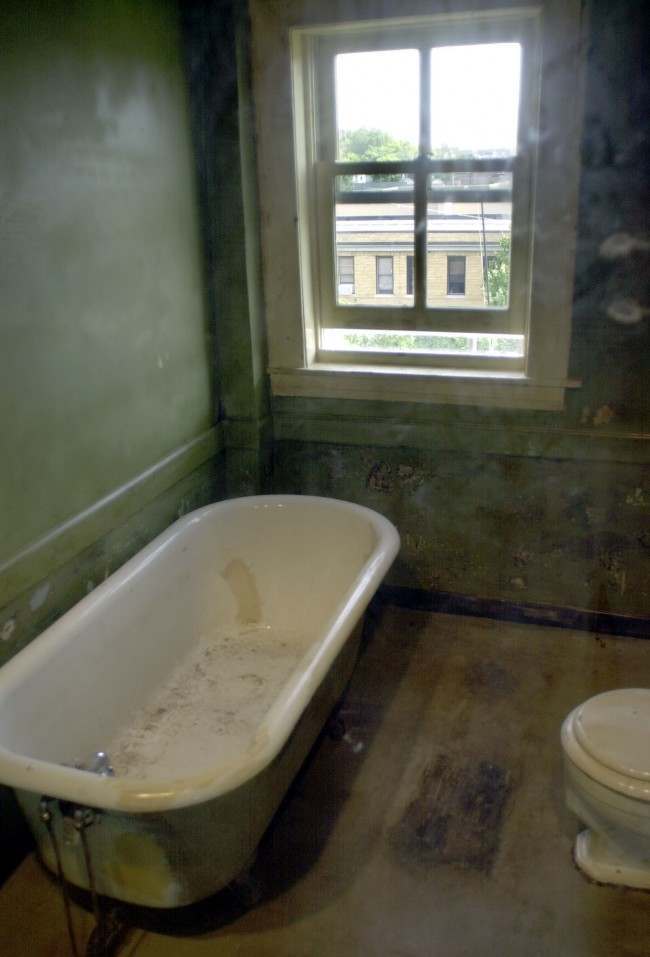
* The new $11 million expansion of the National Civil Rights Museum in Memphis, Tenn., includes the communal bathroom, seen here in this Sept. 24, 2002 file photo, where confessed assassin James Earl Ray shot Dr. Martin Luther King Jr., on April 4, 1968. Ray admitted shooting King from the small bathroom window across from the Loraine Motel in Memphis, Tenn. The bathroom is now encased in glass. The flophouse bathtub has been sold to an online casino for $7,600, the tub’s owner said Thursday.
Ray was found in London in June 1968. He’d been travelling under a false identity.
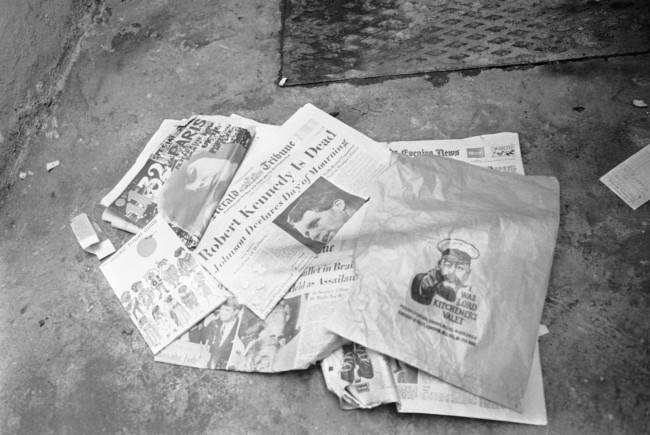
Newspapers, paper bag and an air travel guide which were found in the bed room of the Pax Hotel, where a man identifying himself as Ramon George Sneyd, are lying near a dust bin outside the hotel in Pimlico, London on June 10, 1968. The proprietor of the hotel, Mrs. Anna Thomas said that Ramon George Sneyd lived in her hotel from June 5 to June 8. Ramon George Sneyd was arrested at LondonÂs airport on June 8 for carrying a false passport and a loaded gun. United States Assistant Attorney General is, seeking a speedy extradition for the man believed to be James Earl Ray, the accused assassin of Dr. Martin Luther King. James Earl Ray had a preliminary hearing in court and was remanded in custody without bail until June 18.
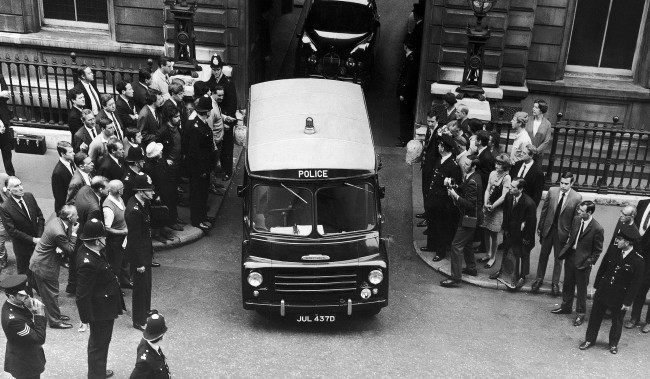
A Police van carrying Ramon George Sneyd, leaves Bow Street court in London, England on June 18, 1968, after the hearing. Ramon George Sneyd, said by American Police to be James Earl Ray, wanted for questioning in connection with the shooting of Dr. Martin Luther King, has been remanded in custody until June 27 when extradition proceedings will be heard. The hearing of the two British charges possession of a forced passport and a firearm and ammunition, without a certificate would be adjourned until the end of the extraction application.
He was arrested at Heathrow airport and charged with possessing a loaded firearm and false passport.
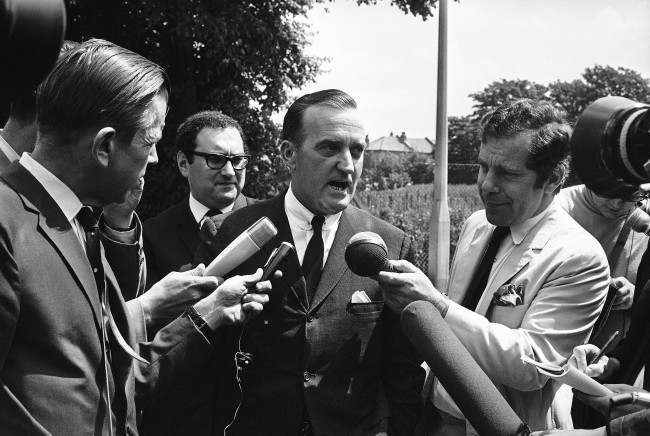
Birmingham, Alabama, lawyer Arthur J. Hanes talks with members of the press outside Wandsworth Prison, London on July 5, 1968, after he had conferred with Raymond George Sneyd. British Court had accepted the Federal Bureau of Investigation (F.B.I.) testimony that Sneyd is really James Earl Ray, the man wanted by the State of Tennessee in connection with the slaying of Dr. Martin Luther King. Behind Hanes is George Monygomery of the National Broadcasting Company.
Ray was sent back to the US.
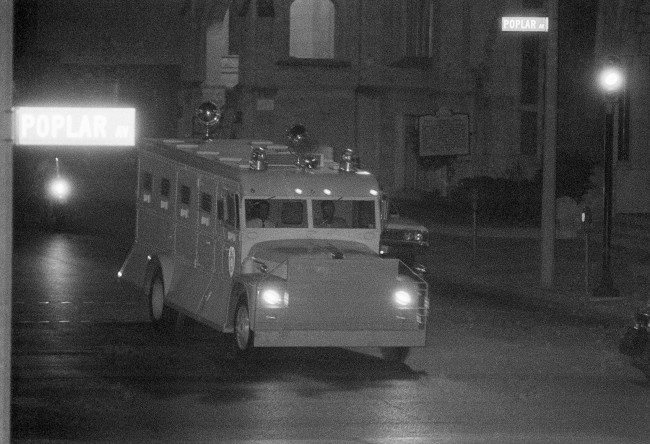
Armored truck, borrowed for the occasion from Jackson, Mississippi, officials, delivers James Earl Ray to the Shelby County Jail in Memphis, Tennessee, July 18, 1968, before dawn, following his flight from London. Inside the van, Ray was wearing safety equipment of material similar to the military flak vest.
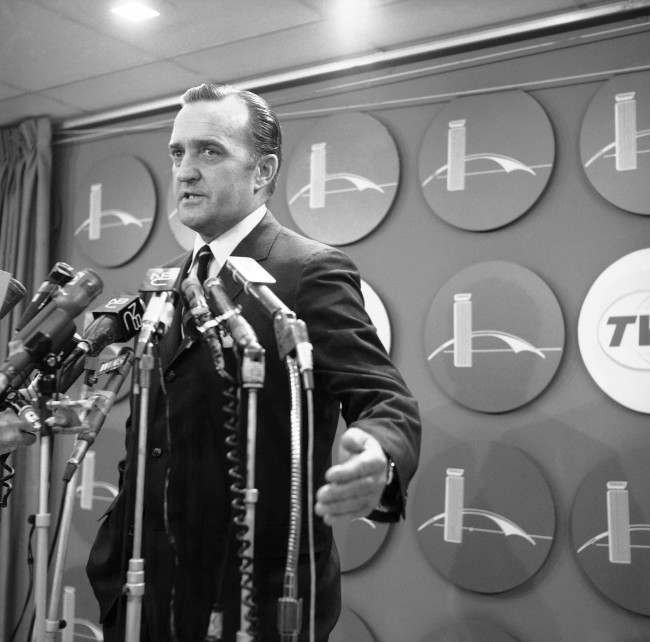
Arthur Hanes attorney for James Earl Ray, holds a press conference on his arrival at Kennedy International airport in New York city on July 19, 1968. Hanes told newsmen he would not seek to have the trial moved from Memphis, Tenn. Hanes was denied a seat on the military jet which brought Ray from London before dawn and arrived at Kennedy airport aboard a commercial jet liner.
King’s family had been waiting for justice.
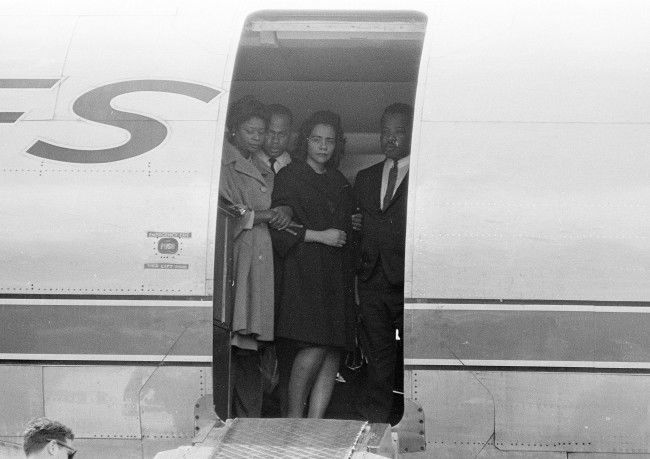
Coretta Scott King, center, widow of slain civil rights leader Dr. Martin Luther King, Jr., is comforted in the doorway of an airliner in Memphis, Tenn., April 5, 1968, as her husband’s body is brought up the ramp.

Ethel Kennedy shakes hands with Martin Luther King III after she and her husband Robert F. Kennedy, center, visited his mother Coretta Scott King at her Atlanta home, April 8, 1968.
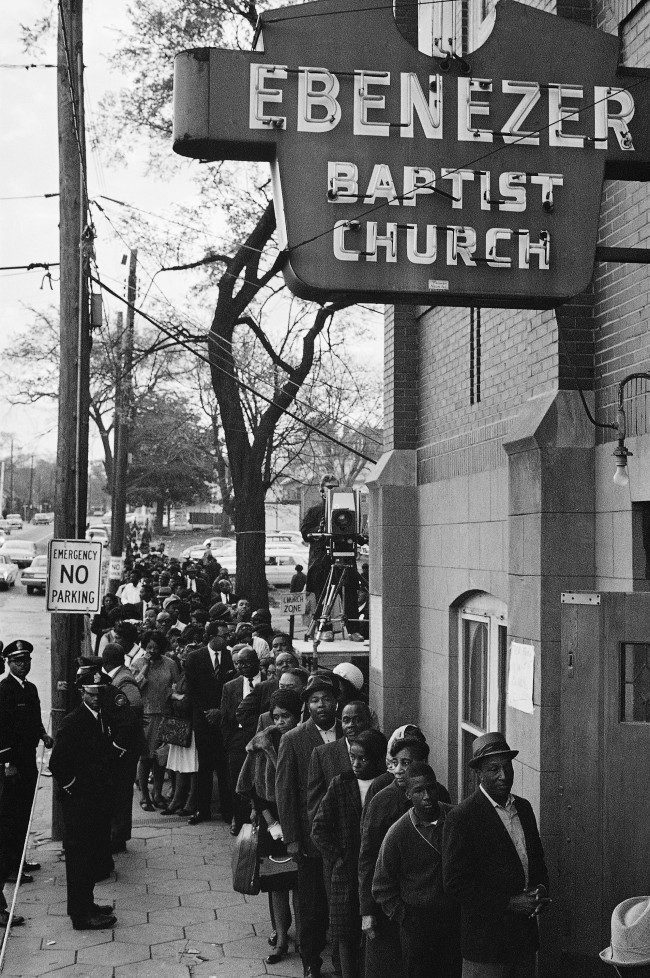
Mourners waiting to view the body of Dr. Martin Luther King Jr. line up outside the Ebenezer Baptist Church in Atlanta just after dawn April 9, 1968. Many had dept a night-long vigil.
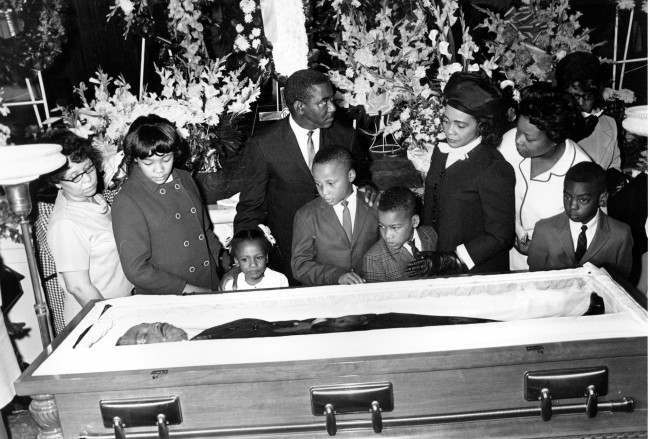
Coretta Scott King, and her four children view the body of her husband, slain civil rights activist leader Dr. Martin Luther King Jr., in Atlanta, Ga., on April 7, 1968. The children are, from left, Yolanda, 12, Bernice, 5, Martin III, 11, and Dexter 7. The civil rights leader was standing on the balcony of the Lorraine Motel when he was killed by a rifle bullet on April 4, 1968. James Earl Ray pleaded guilty to the killing and was sentenced to 99 years in prison. He died in prison in 1998.
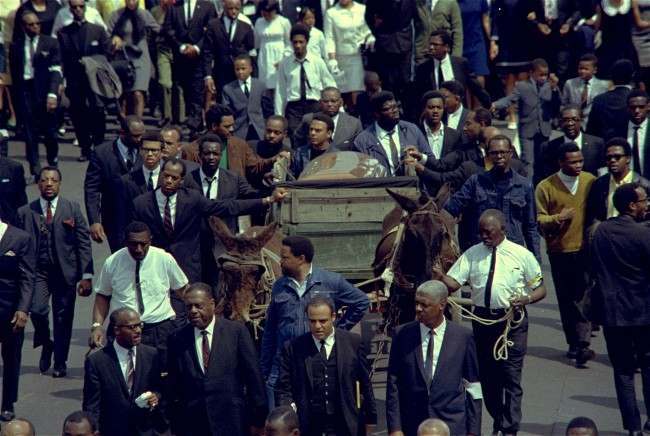
brace of plow mules draws the farm wagon bearing the casket of Dr. Martin Luther King, Jr., along the funeral procession route in Atlanta, Ga., April 9, 1968.

Coretta Scott King is shown with her daughter, Bernice, during the funeral of her husband, civil rights leader Dr. Martin Luther King Jr., at the Ebenezer Baptist Church in Atlanta, Ga., April 9, 1968.
The trial was brief.
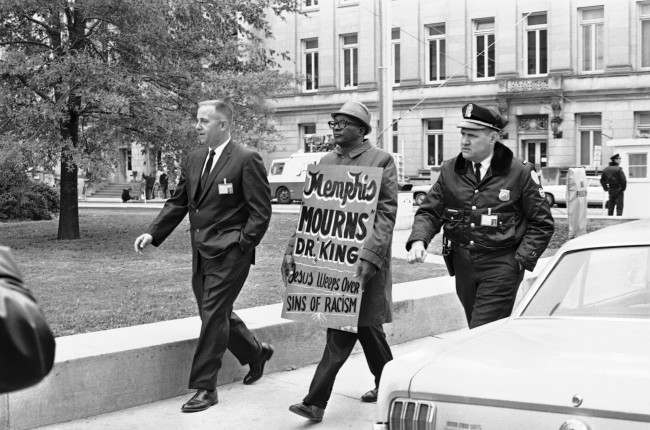
A plainclothes detective and a uniformed Shelby County Deputy sheriff usher away from the Shelby County Jail a picket who attempted to walk the sidewalk around the courthouse where James Earl Ray was scheduled to go on trial in Memphis, Tennessee on Nov. 12, 1968. Ray is accused of the murder of Dr. Martin Luther King.
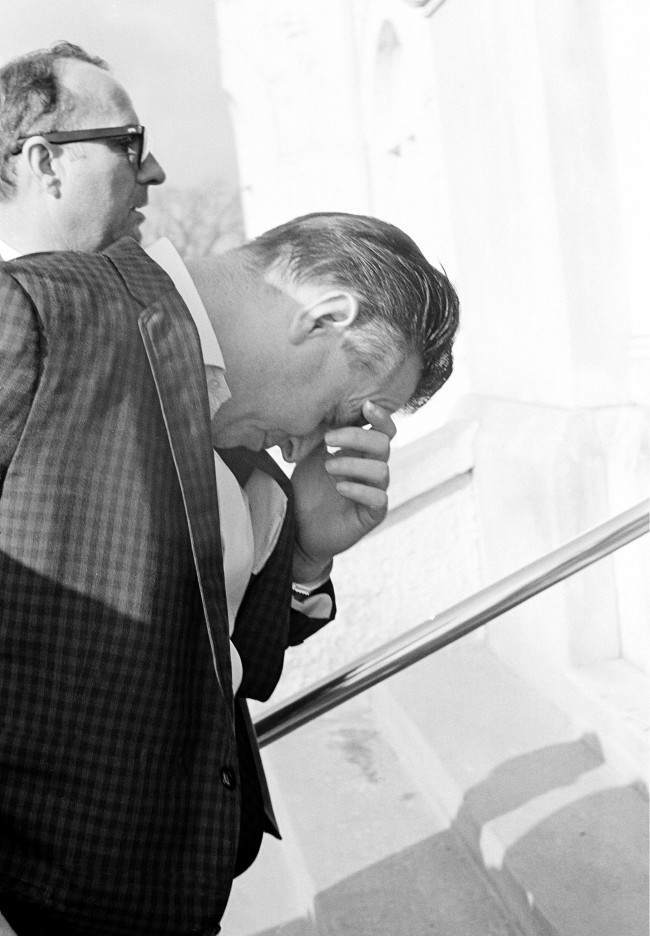
James Earl Ray hides his face behind his hand as he passes photographers en route to a maximum security cell in the Tennessee State Prison in Nashville, Tenn., March 11, 1969. Maj. Mickey McGuire, state highway patrol, is at left. Ray pleaded guilty to killing Dr. Martin Luther King Jr., and was sentenced to 99 years.
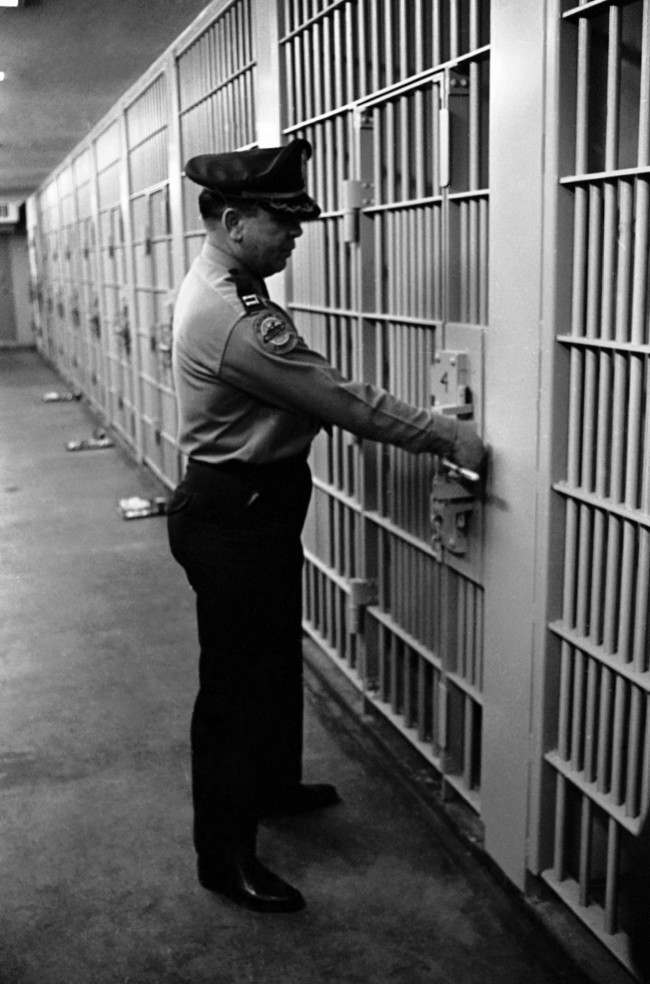
Captain Bobby Robertson checks door of James Earl RayÂs cell in the maximum security building of the Tennessee State Prison in Nashville, Tennessee on March 11, 1969.
Had he acted alone?
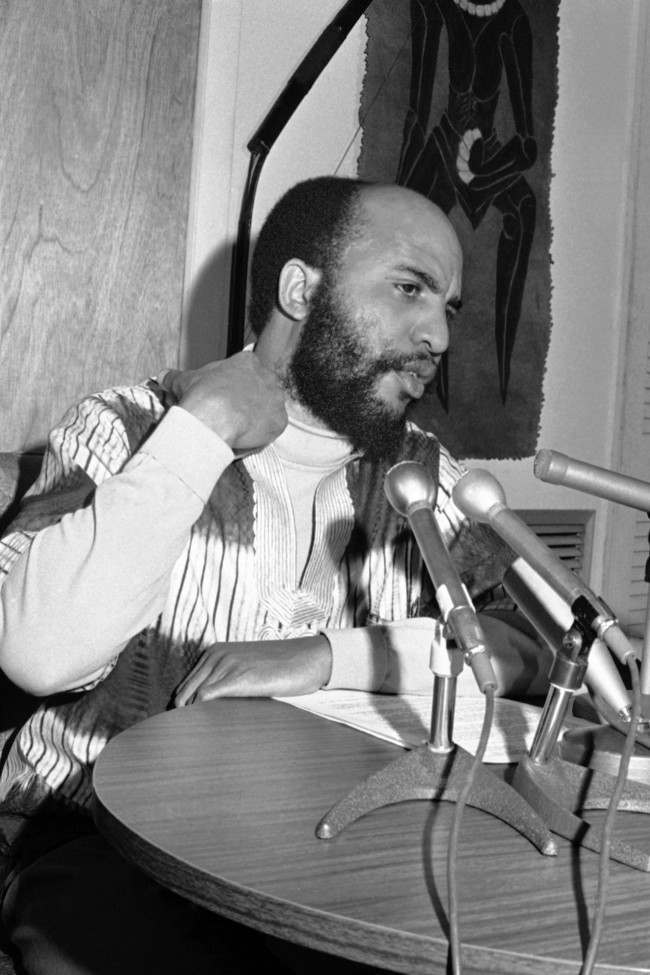
The Rev. James L. Bevel, Philadelphia minister and Southern Christian Leadership Conference Official in Philadelphia on Jan. 28, 1969, who says James Earl Ray, is not the killer of Dr. Martin Luther King, points to a sport on his neck which he says is the area where the bullet entered KingÂs neck. He says Ray did not have either mental or physical ability to assassinate Dr. King.
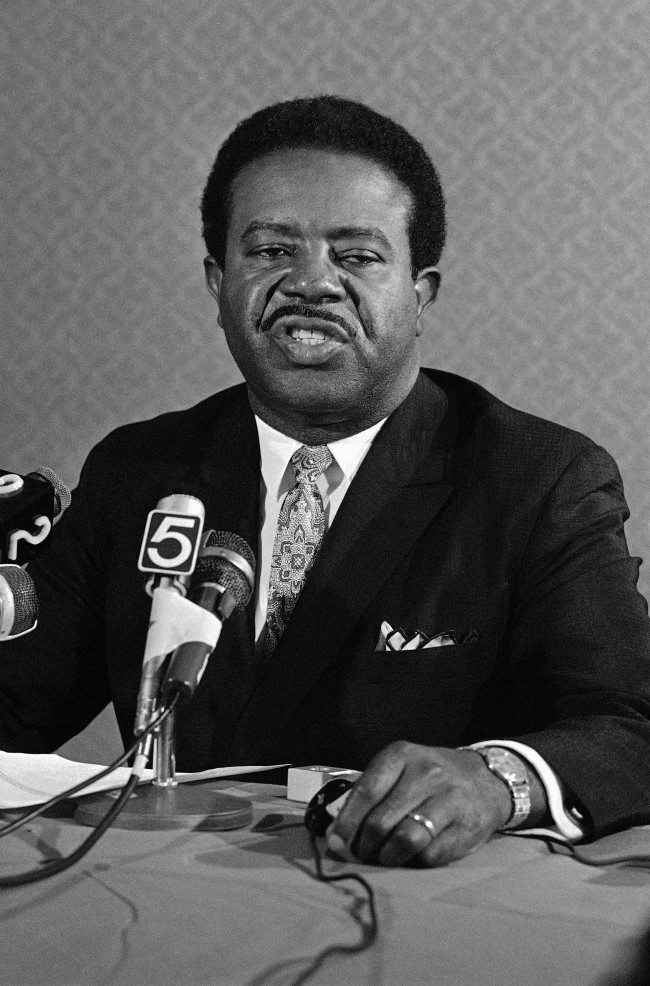
The Rev. Ralph David Abernathy tell an Atlanta press conference, Monday, March 10, 1969 that James Earl Ray’s admission of guilt strengthens his belief that there was a conspiracy in the slaying of Dr. Martin Luther King Jr. Abernathy succeeded King as head of the Southern Christina Leadership Conference.
Just three days into his sentence, Montreal known only as Raoul.

James Earl Ray leaves the Shelby County Jail escorted by US marshals and sheriffÂs deputies enroute to the federal court in Memphis, Tennessee, Oct. 22, 1974, to hear claims that Ray was pressured into pleading guilty to the slaying of Dr. Martin Luther King.
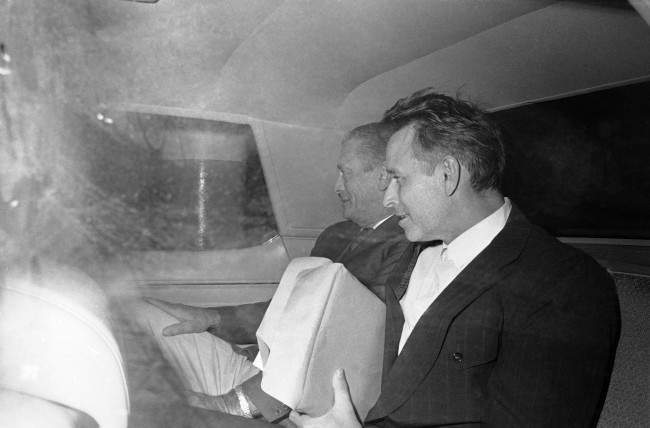
James Earl Ray, right, almost smiles as he gazes at newsmen outside the car taking him from federal court in Memphis, Tennessee on Oct. 23, 1974, back to his jail cell. Ray, who usually walks expressionless with his head down, is claiming in court that he was pressured into pleading guilty in the slaying of Dr. Martin Luther King. A US marshal is at left.
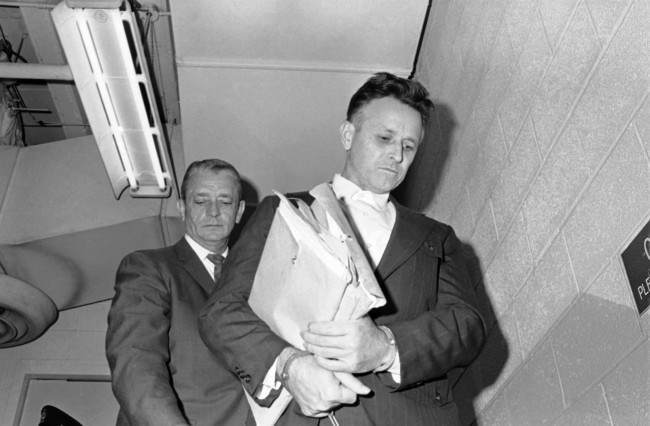
In 1977, he escaped.
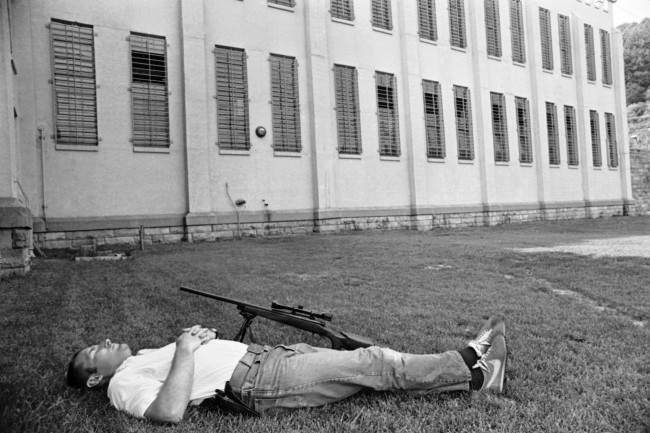
An unidentified sharpshooter at Brushy Mountain State Prison at Petros, Tennessee, June 11, 1977, takes a nap on the lawn in front of Cellblock after duty in the search for six escaped convicts. Hundreds of law officers search the mountains for the escapees, including James Earl Ray.
Ray had jumped a wall.
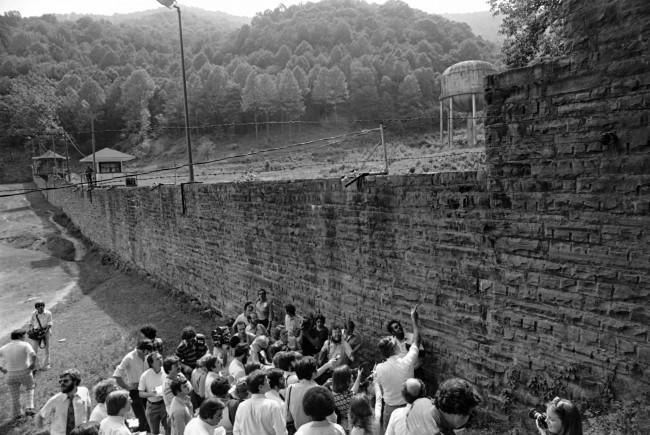
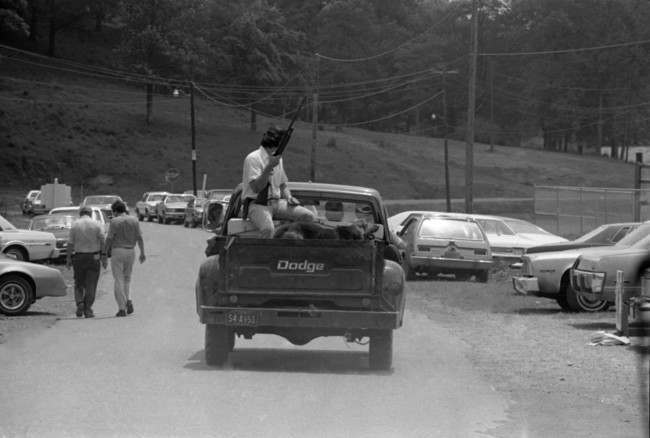
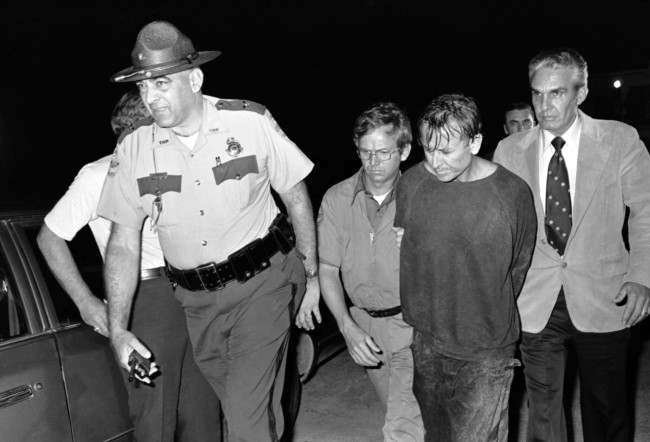
James Earl Ray, right, is escorted by Brushy Mountain State Prison Warden Stonney Lane following his capture in the rugged country near Petros, Tennessee, June 13, 1977.
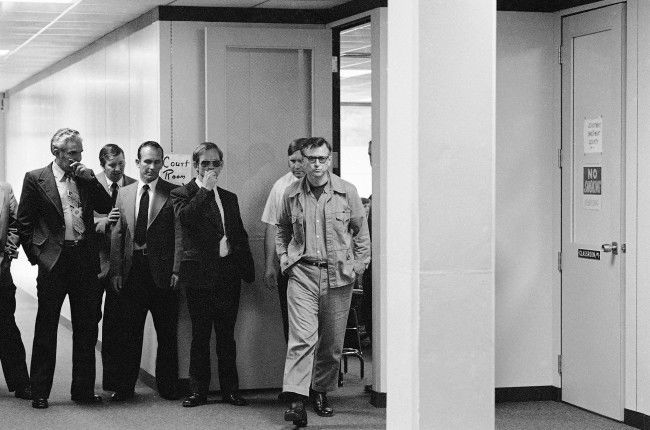
James Earl Ray, who is serving a 99 year sentence for the death of Dr. Martin Luther King, Jr., walks from the court room at Wartburg, Tennessee on Oct. 27, 1977, where is was being tried for escape. Ray was found guilty and given a sentence of one to two years on Thursday.
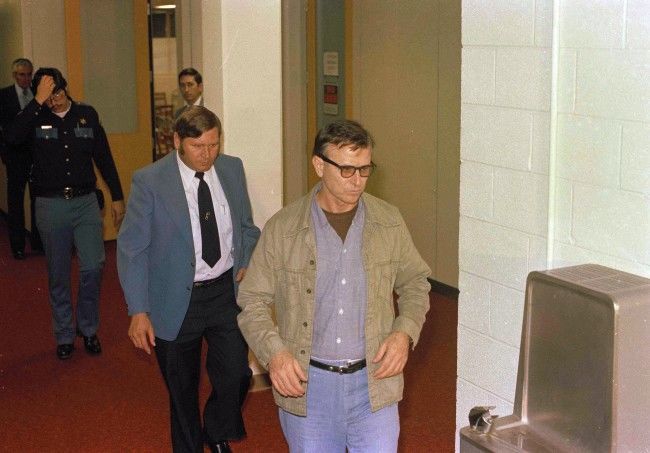
James Earl Ray, wearing jacket and tie, is shown at his escape trial in Tennessee, Nov. 1977.
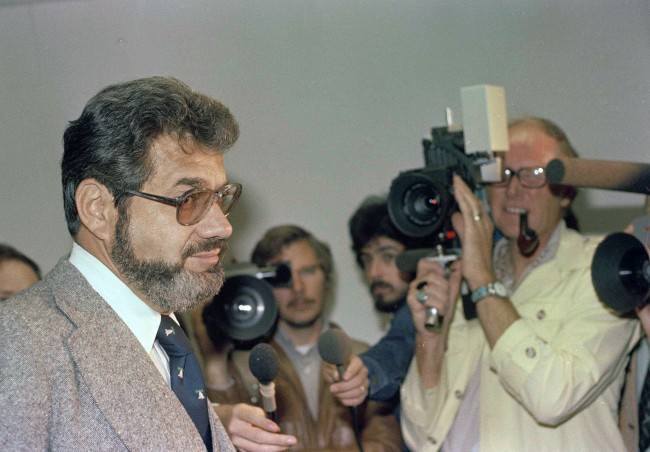
Mark Lane, attorney for James Earl Ray
He spent the next 29 years fighting for the trial his guilty plea had forestalled – and won the support of the King family.

James Earl Ray, convicted assassin of Dr. Martin Luther King, is shown at Brushy Mountain Prison, Tenn., March 29, 1978.
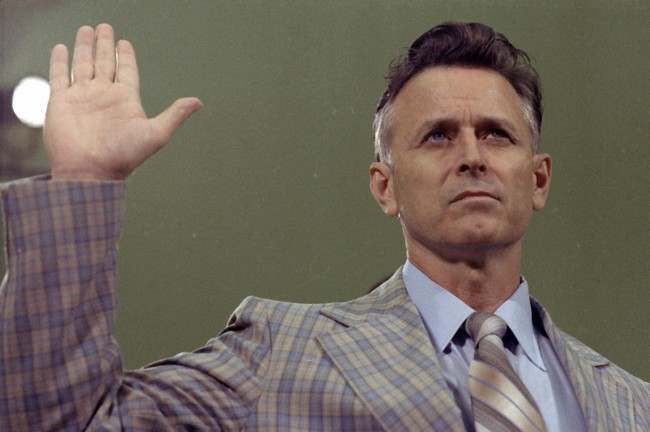
James Earl Ray, convicted killer of civil rights leader Dr. Martin Luther King Jr., is shown Aug. 16, 1978, being sworn in prior to his testifying before the House Select Committee on Assassinations in Washington.
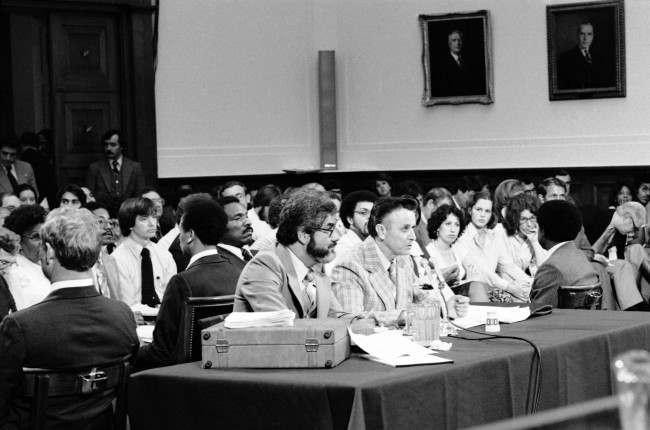
James Earl Ray sits with his attorney Mark Lane during testimony before the House Assassinations Committee in Washington, August 16, 1978. Federal marshals form a ring around ray and the attorney as they sit with their books to the table facing the audience.
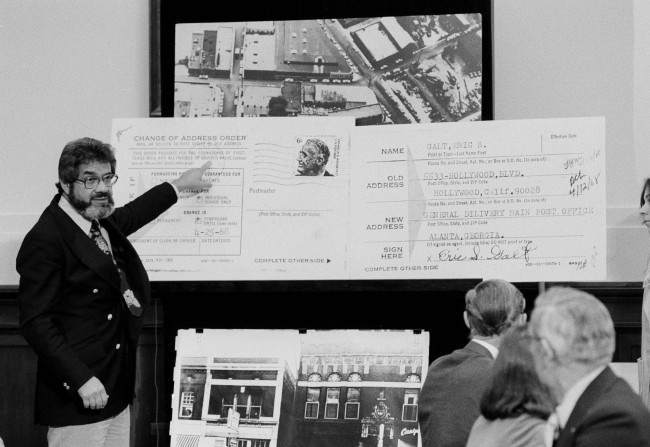
Mark Lane, attorney for James Earl Ray, stands by an enlarged change of address form during the session of the House Assassinations Committee in Washington, Aug. 18, 1978. The forms, executed in the name of Eric S. Galt which is an alias used at one time by James Earl Ray, are presented as part of the panel’s probe of the slaying of Dr. Martin Luther King.
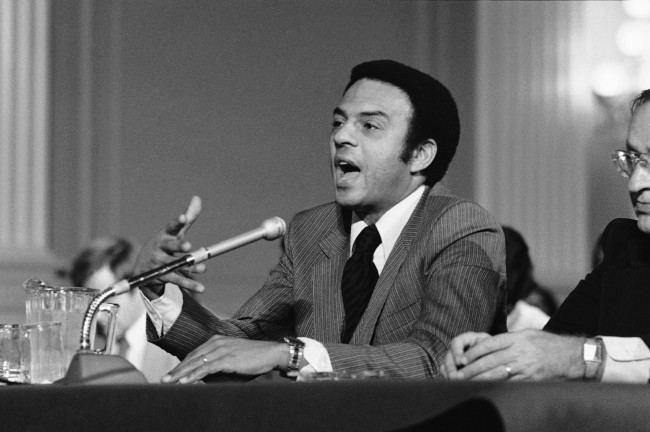
U.N. Ambassador Andrew Young appears before the House Assasinations committee, Nov. 17, 1978, stating that he knew no evidence that the FBI was involved in the assasination of Martin Luther King, Jr as was charged by James Earl Ray’s lawyer. (AP Photo)
New forensic tests in 1997 on the gun said to have been used in the assassination proved inconclusive.
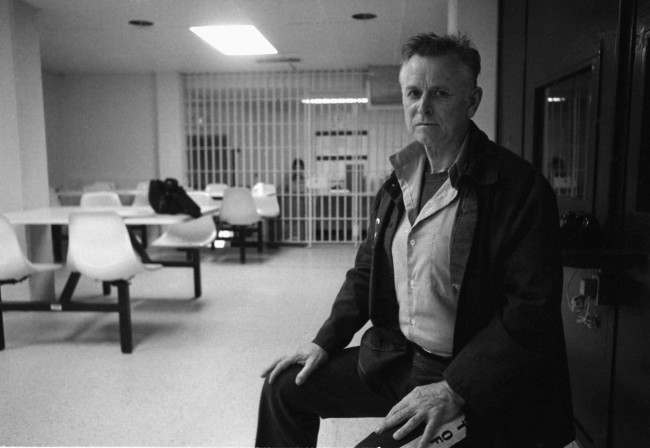
James Earl Ray shown during an interview at the Brushy Mountain State Prison in Petros, Tenn., March 31, 1988. Ray has spent most of his “free time” at the prison plotting ways to get out, either by going over the wall or into a courtroom. But while Ray has had some small success escaping Brushy Mountain, the 60-year-old Alton, Ill., native hasn’t been able to get back into court since March 10, 1969, the day he pleaded guilty to killing the Rev. Martin Luther King Jr.
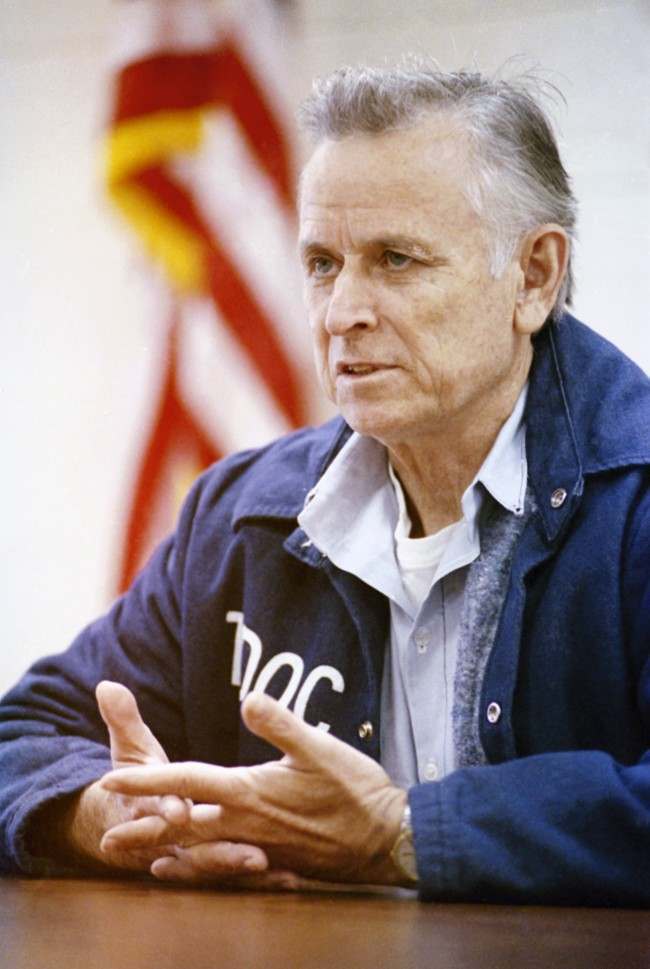
James Earl Ray is interviewed at the Riverbend Maximum Security institution in Nashville, Tennessee on Jan. 19, 1992, where he is serving 99 years for the murder of civil rights leader Rev. Martin Luther King Jr., Ray proclaims in his new book, Who Killed Martin Luther King?, that he is innocent.
Ray died on 23 April 1998.
Would you like to support Flashbak?
Please consider making a donation to our site. We don't want to rely on ads to bring you the best of visual culture. You can also support us by signing up to our Mailing List. And you can also follow us on Facebook, Instagram and Twitter. For great art and culture delivered to your door, visit our shop.

